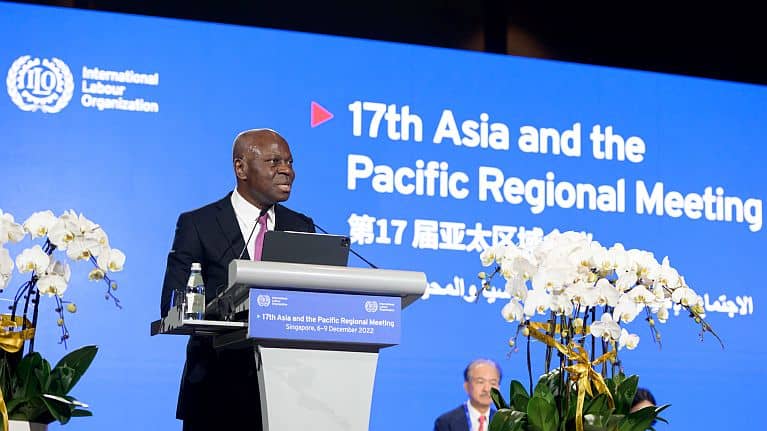The Pacific Islands experienced negative economic growth of -2.3 percent in 2020 due to the COVID-19 pandemic, stated the International Labour Organisation (ILO) Director General, Gilbert F. Houngbo in a report tabled at the ILO’s 17th Asia Pacific Regional Meeting in Singapore.
He said smaller island countries with a strong Gross Domestic Products (GDP) dependency on tourism were largely affected.
“The Asia and the Pacific region experienced negative economic growth of 1.3 per cent in 2020 – the most severe contraction in nearly half a century,” said Houngbo.
“The Pacific Islands experienced a negative economic growth of -2.3 per cent in 2020, largely driven by Australia and New Zealand but also reflecting smaller island countries with a strong GDP dependency on tourism.
“Throughout the pandemic, governments have faced a double challenge in their responses: (a) to contain the spread of the virus through mobility restrictions, including border and workplace closures and to respond to the resulting social and economic disruptions that have adversely affected businesses and the livelihoods and well-being of women and men workers and their families.
“The national lockdowns and closures of international borders imposed by many countries, especially during the first months of the pandemic, weighed heavily on domestic and foreign consumer demand, investment and tourism, all the elements that had pushed the Asian economy to its top-ranked position in recent years.
“Even as more geographically targeted and sector-specific measures have gradually become the norm, travel restrictions are still in place in many countries, with adverse impacts on the economy.
“Yet even as the COVID-19 crisis eases in most countries and borders reopen, pre-existing crises have continued and new crises have unfolded in recent months, compounding the already fragile circumstances of many countries or areas.
Poverty impact on Pacific countries high during Covid-19
Meanwhile, poverty in general, as well as working poverty, increased for the first time after having trended downwards for decades in the Asia and the Pacific region due to the COVID-19 pandemic.
This was revealed by the International Labour Organisation Director General, Gilbert F. Houngbo at the ILO’s 17th Asia Pacific Regional Meeting in Singapore.
“The loss of working hours was also driven by employment losses,” he said.
“The Asia and the Pacific region saw its employment-to-population ratio decline from 57.7 per cent to 55.3 per cent between 2019 and 2020, with only a small uptick to 55.8 per cent in 2021.
“In the Asia and the Pacific region, employment declined by 58 million between 2019 and 2020, even though the overall working-age population increased by 37 million for demographic reasons.
Houngbo said workers who lost their jobs either went into unemployment or moved outside the labour force.
The ILO Monitor estimated that labour income declined 3 per cent in the Asia and the Pacific region in 2020.
“Labour income is estimated to have rebounded in Asia and the Pacific in 2021, growing by 2.6 per cent.
“According to ILO estimates, the number of working women and men living in extreme poverty (below US$1.90 a day) increased by 2.1 million people in Asia and the Pacific in 2020, bringing the total to 64.5 million (3.5 percent of total employment).

One Comment “WHO: Pacific islands facing a bumpy road toward the ‘Healthy Islands’ vision”
Comments are closed.